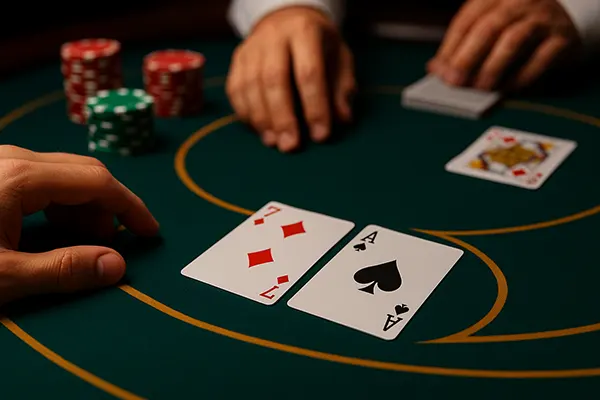
Micro-decisions in Blackjack: How Minor Choices Shape Long-term Advantage
Success in blackjack does not solely rely on intuition or chance. While luck influences short-term results, long-term consistency stems from informed decision-making. The tiniest of choices — whether to hit, stand, double, or split — compound over hundreds of hands, creating a substantial effect. Understanding how these micro-decisions impact gameplay is essential for any player aiming for statistical advantage.
Strategic Micro-decisions: The Building Blocks of Advantage
Blackjack is often seen as a game of straightforward rules, but the real complexity lies in its decision tree. Every hand presents opportunities to increase or reduce the house edge. Choices such as splitting a pair of eights against a dealer’s ten or deciding whether to double on soft 18 can statistically alter a player’s expected return.
Take, for instance, the difference between standing on 16 versus hitting against a dealer’s 10. Many novice players freeze under pressure, but the data-driven play is clear: hitting offers a better chance at survival. Over time, consistently choosing optimal actions adds up, shaving the house edge down to around 0.5% when basic strategy is perfectly applied.
Such choices may seem trivial in isolation, but when applied repeatedly across sessions, they define whether a player merely survives or gains long-term control over variance.
Analysing Long-term Impact of Consistency
Micro-decisions are not impactful because they promise instant success, but because they reinforce a structure of disciplined play. When tracked over hundreds or thousands of hands, correct decisions tilt the probabilities. Software simulations demonstrate that applying perfect basic strategy over 1,000 hands increases net return by several percentage points compared to erratic play.
This advantage might seem marginal, but in a game of narrow margins, even a 2% swing can distinguish between winning and losing sessions. Furthermore, micro-decisions become habits — they create a mental framework that limits tilt and emotional mistakes.
Players who cultivate this consistent decision-making model not only reduce losses but position themselves to exploit streaks and capitalise when the odds align in their favour.
Psychological Discipline and Pattern Recognition
The mental aspect of blackjack is often underestimated. While the basic strategy provides the blueprint, the psychological discipline to follow it under pressure is equally critical. Micro-decisions test a player’s emotional resilience — especially when facing repeated losing hands despite ‘doing everything right.’
Seasoned players understand that the correctness of a choice isn’t judged by the result of one hand, but by its alignment with long-term expected value. This distinction separates reactive play from strategic execution. Maintaining confidence in strategy, even during downswings, is a psychological skill built through experience and pattern recognition.
Recognising dealer tendencies, interpreting table dynamics, and avoiding common traps — such as overbetting after wins — require constant mental awareness. In this sense, micro-decisions aren’t just technical moves; they’re tests of a player’s mental stamina.
Forming a Cognitive Edge Over Time
Repeated exposure to gameplay sharpens instinctive reactions. With time, correct decisions become second nature, freeing up mental resources to observe patterns or detect shifts in pace. This cognitive edge complements mathematical strategy, turning an average player into a formidable opponent.
Moreover, disciplined micro-decisions inoculate against impulsive errors. The act of sticking to a tested approach conditions the mind to ignore distractions, peer pressure, or the misleading pull of intuition when it conflicts with probability.
Ultimately, cultivating mental rigour transforms blackjack from a reactive game into a proactive contest of wit and patience — where mastery lies not in the cards dealt but in how they are played.

Advanced Play: From Basic Strategy to Tactical Adaptation
Once a player masters the foundational micro-decisions of basic strategy, the next level involves tactical adaptation. This means shifting play based on deck composition, dealer behaviour, or betting patterns. The cornerstone of this is card counting — a disciplined application of probabilistic advantage built entirely upon micro-decisions taken under evolving conditions.
Card counters don’t just track values; they constantly update probabilities in real-time. Whether to increase the bet size, stand on a borderline total, or split a specific pair is always informed by the current state of the shoe. Each of these decisions, while seemingly small, leverages a cumulative edge when executed accurately.
It’s this framework of continuous small adjustments that enables long-term profit. Tactical play is not a deviation from basic strategy, but an advanced evolution of it, grounded in observation, calculation, and mental endurance.
The Synergy Between Tactics and Execution
Strategic adaptation thrives on consistency. A player may count perfectly, but if micro-decisions slip due to fatigue, emotion, or distraction, the edge is lost. This is why expert players spend significant time practising execution — drilling correct moves until they become reflexive even in unfamiliar contexts.
In high-stakes environments, the margin for error is minuscule. The ability to maintain focus and apply consistent decision-making under surveillance, pressure, and time constraints is what separates professionals from casual players. Tactical skill and decision accuracy must operate in harmony.
Therefore, even at the highest level, blackjack remains a game of small, precise choices. Every decision made at the table is a data point. Over thousands of repetitions, the player who makes fewer errors — even of the smallest kind — edges closer to positive expectation.

